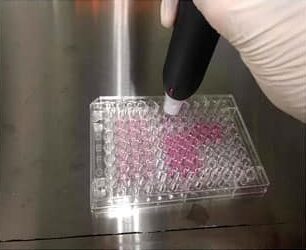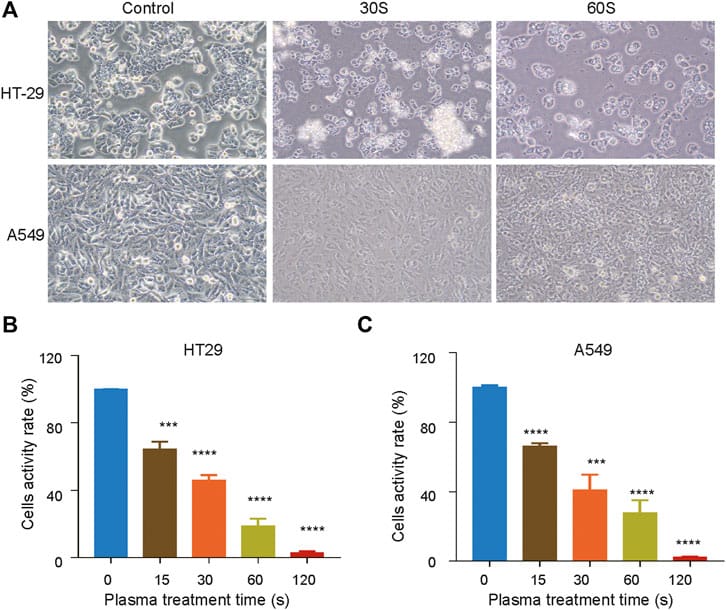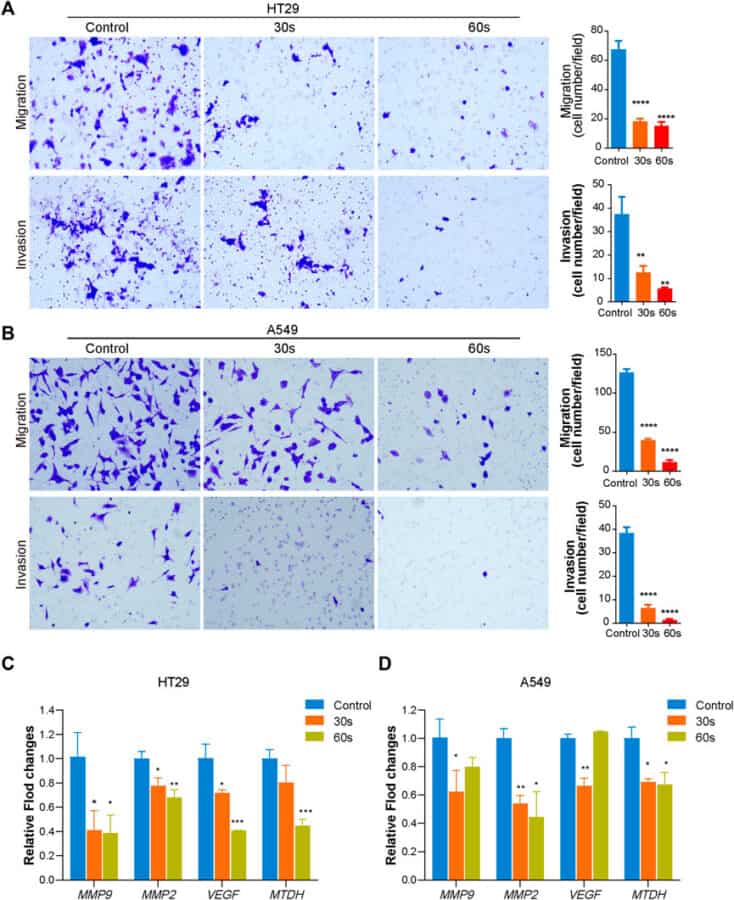Cold atmospheric plasma induces apoptosis in human colon and lung cancer cells
through modulating mitochondrial pathway
Authors: Yanhong Wang, Xinyu Mang, Xuran Li, Zhengyu Cai and Fei Tan
Publication: Cold atmospheric plasma induces apoptosis in human colon and lung cancer cells through modulating mitochondrial pathway, Frontiers in Cell and Developmental Biology, Front. Cell Dev. Biol., 26 July 2022, Sec. Cell Death and Survival
First published: https://www.frontiersin.org/articles/10.3389/fcell.2022.915785/full
Total Recap:
Summary of an interesting publication on basic research with our industrial product piezobrush® PZ2 for possible use in the medical field:
The treatment with cold atmospheric plasma (CAP) is an emerging and promising oncotherapy with significant potential. It has benefits that traditional treatment modalities lack. The aim of this study was to investigate the effect and mechanism of plasma-inhibited proliferation and plasma-induced apoptosis on HT29 human colon cancer cells and A549 lung cancer cells in vitro and in vivo.

In this study, relyon plasma’s piezobrush® PZ2, a handheld CAP device based on piezoelectric direct discharge technology, was used to generate and deliver non-thermal plasma. With a maximum power consumption of 30 W, the CAP device generated cold active plasma with a nozzle temperature of <50 °C. The plasma nozzle was placed 10 mm above the treated surface. The treatment durations were 15, 30, 60 and 120 seconds (Figure 1C, D). To study the effect of PZ2 treatment on different tumor cells, direct plasma treatment was performed on the HT29 and A549 cells without covering them with the cell culture medium.
The CAP treatment inhibited the proliferation of HT29 colon cancer cells and A549 lung cancer cells. The analysis of the inhibitory effect of the CAP treatment was made with the Cell Counting Kit-8. The induced morphological changes at cellular and subcellular level were examined using transmission electron microscopy and tumor cell migration and invasion were performed using the Transwell migration and Matrigel invasion assay.
In figure 2 optical images (A) show the damage to HT29 and A549 cells caused by the plasma treatment. The images (B and C) show the decreasing cell activity as the duration of treatment with CAP increases. The images and values above represent results from three independent experiments.
The HT29 (A) and A549 (B) cells were processed with the piezobrush® PZ2 for 30 and 60 seconds, incubated for 24 h before being subsequently subjected to the Transwell migration and Matrigel invasion assay. Representative images (left) and statistics (right) of the migration and invasion assay are shown above in figure 3. The scale bar corresponds to 200 μm. The experiments were performed in triplicate.
Plasma-induced apoptosis in HT29 and A549 cells was confirmed using AO/EB staining coupled with flow cytometry and production of apoptosis-related proteins such as cytochrome c, PARP, cleaved caspase-3 and caspase-9, Bcl-2 and Bax, was verified using Western blotting.
The results of the plasma treatment in in-vitro tests were tested in vivo using xenograft mice. The anticancer effect was confirmed and attributed to CAP-mediated apoptosis. Immunohistochemical analysis revealed that the expression of cleaved caspase-9, caspase-3, PARP and Bax was upregulated, while that of Bcl-2 was downregulated after CAP treatment. These results suggest that activation of mitochondrial signaling is involved during CAP-induced apoptosis of human colon and lung cancer cells in vitro and in vivo.
You find the whole article here.






